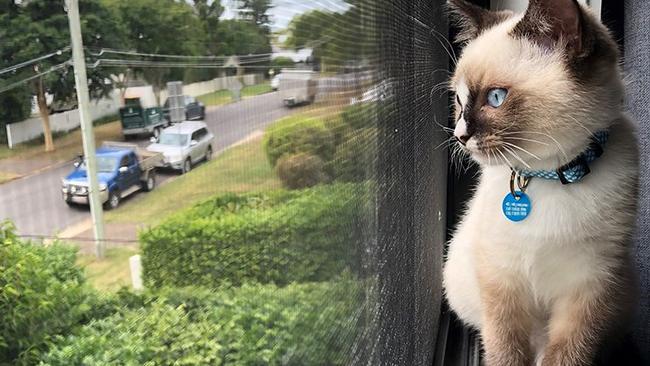A Tasmanian research project shows average pet a big wanderer
While the movements of feral cats attract the most attention, a Tasmanian cat-tracking research project has shown pet moggies are roaming far and wide — and helping kill scores of wildlife. LATEST >>

North West Coast
Don't miss out on the headlines from North West Coast. Followed categories will be added to My News.
- Rescue cat taught to walk on leash amid confinement debate
- New laws allow residents to trap stray cats
A CAT-TRACKING project in one of Tasmania’s little penguin hot spots has revealed just how far domestic moggies can travel.
Last year, new research from the National Environment Science Program revealed that, on average, each roaming cat killed 40 native reptiles, 38 native birds and 32 native mammals each year.
Research team head Professor Sarah Legge from the University of Queensland said roaming domestic cats killed about one quarter of the number killed by feral cats each year.
“But there are more pet cats in Australia than feral cats and they are concentrated in a much smaller area,” Prof Legge said.

Now, Cradle Coast Authority’s Natural Resource Management team, in collaboration with Tasmania’s Department of Primary Industries, Parks, Water and Environment has tracked the movements of 11 domestic cats in the State’s North West to discover the size of a domestic cat’s home range.
The project aimed to understand the movements of domestic cats in semi-urban areas and help owners make informed decisions about their cat’s safety and welfare.
Lightweight GPS trackers were attached to a harness on the test subject cats for nine days. CCA’s regional cat management co-ordinator Margot Oorebeek said the results had come as a surprise for some cat owners.
“Many cat owners believe that their cat never leaves their property, but the data is showing otherwise,” Dr Oorebeek said.

The cats tracked by the project were selected from urban, urban-edge and rural
areas across the Cradle Coast region.
The results show that the median size of a cat’s home range is 1.4ha covering 12 neighbouring properties in an urban area such as Ulverstone or Devonport.
Rural cats travelled further afield than urban cats, with one such cat, Ollie, having a home range of seven hectares — the largest home range in the project.
And it seems cats do not mind crossing roads.
“Cats regularly risk one of their nine lives crossing the road,” Dr Oorebeek said.
One rural cat shocked his owners by regularly wandering 300 metres up and down a
busy country road to visit the neighbours.
Under Tasmania’s new cat management laws, which came into effect in March, cats can be trapped on private property, provided the trap is checked at least once every 24 hours.
A trapped cat must either be returned to its owner or taken to a cat management facility within a day of being caught.
Farmers can also euthanise a cat on primary production land and production premise.
The full cat tracker report is available on the Cradle Coast website: www.cradlecoast.com/cat-tracker


